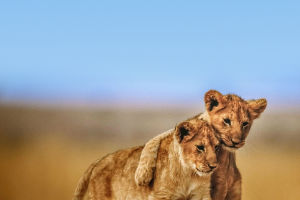Giraffes are one of the most unique animals in the world. Their long necks and legs make them stand out in any crowd, and their gentle demeanor has made them a favorite of humans for centuries.
There are nine different subspecies of giraffes, each with its unique coloration and pattern of spots.
Giraffes can weigh up to 4,000 pounds and grow up to 18 feet tall, with their necks alone accounting for up to six feet of that height.
The giraffe’s long neck is not just for show, it serves a very important purpose. Giraffes use their long necks to reach leaves and vegetation high up in trees that other animals cannot reach.
Giraffes are herbivores and their diet consists mainly of leaves, flowers, and fruits. Their long tongues, which can be up to 18 inches long, help them to pluck leaves and thorns from trees.
Giraffes are also known for their distinctive spotted coat. The spots on a giraffe’s coat are unique to each individual and can be used to identify them.
The spots are not just for show, they serve as camouflage in their natural habitat. The spots help to break up the giraffe’s outline, making it harder for predators to see them in the tall grass.
Giraffes are social animals, these groups can consist of up to 20 individuals and are usually made up of females and their young. Males tend to be more solitary and only join the group during the mating season.
Giraffes are not only fascinating animals, but they are also important to the ecosystem. As herbivores, they play an important role in controlling the growth of vegetation.
They also help to disperse seeds through their droppings, which helps to promote plant growth in different areas.
Unfortunately, giraffes are facing several threats in the wild. Habitat loss, poaching, and climate change are all contributing to the decline of giraffe populations.
In 2016, the International Union for Conservation of Nature (IUCN) listed giraffes as “vulnerable” on their Red List of Threatened Species.
Conservation efforts are underway to help protect giraffes and their habitat. One such effort is the Giraffe Conservation Foundation, which is working to ensure the long-term survival of giraffes in the wild.
In addition to conservation efforts, there are also ways that individuals can help to protect giraffes. Another way is to make sustainable choices in our daily lives, such as reducing our carbon footprint and supporting sustainable agriculture practices.
Giraffes are fascinating animals that are beloved by many. While they are facing several threats in the wild, conservation efforts are underway to ensure their survival. By working together, we can help to protect these amazing animals for generations to come.


